We may receive a commission when you use our affiliate links. However, this does not impact our recommendations.
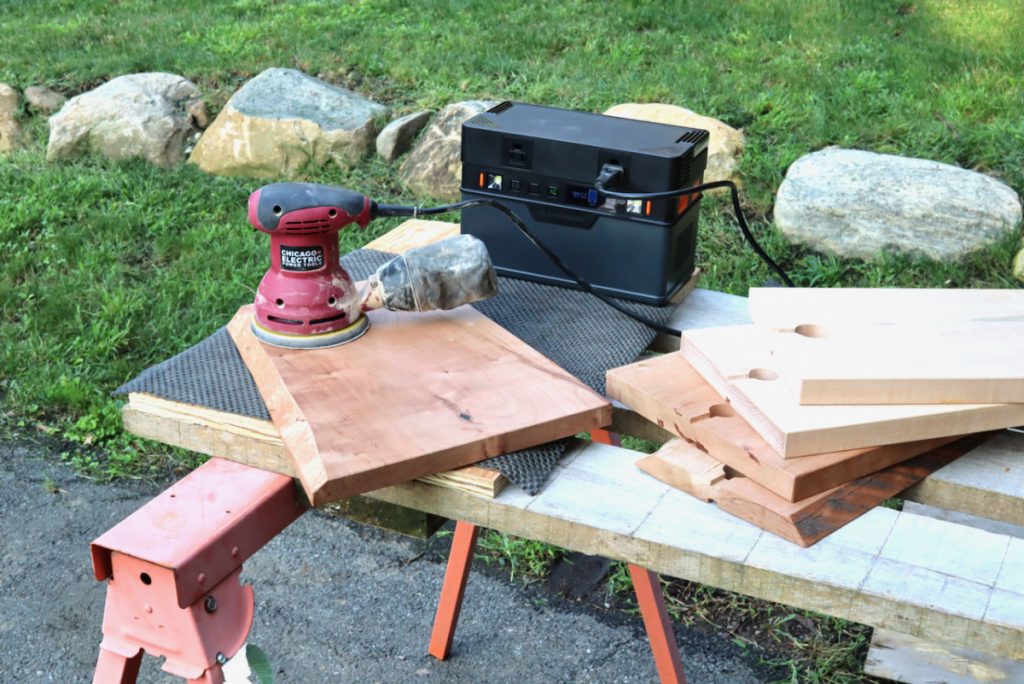 While preparing to sand some cutting boards for customers, I decided to do the sanding outside after noticing how blissful the weather was. After all, why have dust in the shop when I can spread the particles in the yard? I could have rolled out one of my long extension cords (or perhaps bought a cordless sander), but instead, I decided to try my new power station and see if it could save me from the tedious work of extension cord husbandry or from the expanse of buying a new cordless tool.
While preparing to sand some cutting boards for customers, I decided to do the sanding outside after noticing how blissful the weather was. After all, why have dust in the shop when I can spread the particles in the yard? I could have rolled out one of my long extension cords (or perhaps bought a cordless sander), but instead, I decided to try my new power station and see if it could save me from the tedious work of extension cord husbandry or from the expanse of buying a new cordless tool.
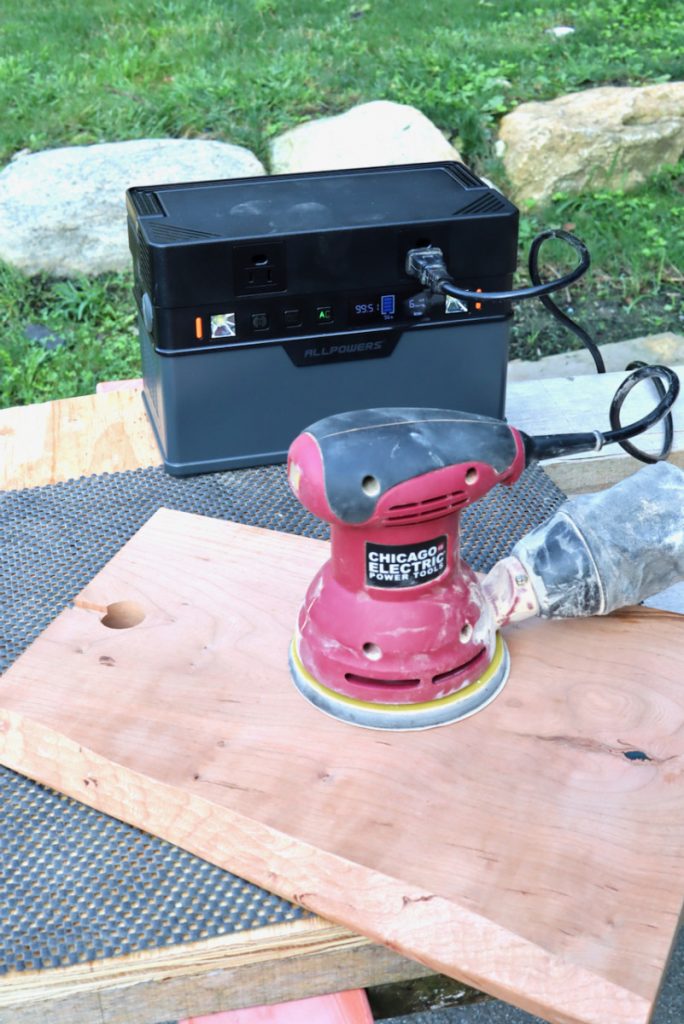
Power Stations are big clusters of rechargeable batteries that are huddled in a fancy box. They come in many shapes and capacities and are used to supply electricity, mainly while camping and during power outages at home. There are plenty of options to choose from. From a basic (200W) unit that will allow you to charge your phone and illuminate your tent, to a powerful 3000W unit that is strong enough to run a stationary woodworking tool. Units capable of producing more Watts (output) and more Watts per Hour (Wh) are more powerful and expensive than low Watt units.
The 500W (606Wh) power station that I purchased [Amazon] (by the way, it has a peak power capability of providing 1000W for a short while) is a medium-small size unit that can be handy both at home and during camping. But before we go into more details, I hope you won’t mind delving into some basic electricity, as without some knowledge of currents, voltage, and watts, it would be difficult to make the best decision vis-a-vis buying and using a power station.
A Quick Electricity Crash Course
The electrical motor inside my sander runs on 110 Volt (alternate current) and consumes electrons from the grid at a rate that is measured in Ampere units. The grid provides the Voltage potential (think of it as equivalent to water pressure), and the size and makeup of the motor determine how much current it requires – or make use of. If you multiply Voltage (V) by Amperes (Amp, AMP, A, amp), you will find how much Power (Watts) your motor requires to operate on.
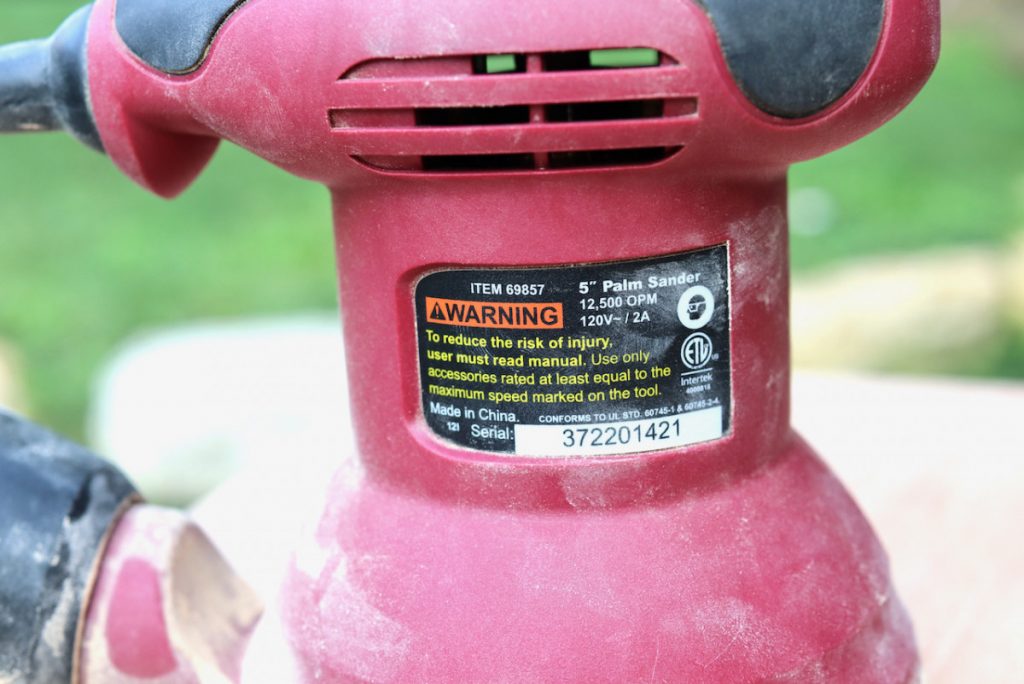
The labels on every electrical tool and appliance should state the tool’s operating Voltage and Amperage. In this case: 120V ~ / 2AMP.
In the case of my sander, 120V x 2A = 240 Watts. Since my Power Station can provide up to 500W continuous power (peak 1000W) wouldn’t you say that I am well within the parameters of my sander’s needs? The answer is yes, but with one caveat; there is another factor you need to know about, enter inrush current. Electric motors are known for drawing extra current (Amp) for a short while once they begin to revolve. That inrush current can be a few times higher than the number that is printed on the tool’s label, and if our Power Station can not provide this demand, the tool will not work. So, for instance, if my sander runs on 2A nominally. Immediately after turning the motor on, it will draw a much higher current than 2A. In some cases, the spike in current can be four times or even higher than the work current. That means that for a short while until the tool finish building up speed, the power station will have to provide a much higher wattage. Luckily my power station has a peak power output of 1000W, high enough to support the surge in amps.

My power station’s control panel shows how many watts are consumed by the sander. In this case, 169W. The display also tells us that the unit is 95% charged and will be able to provide power at this rate for the next 3:54 hours.
After turning the sander on and witnessing that it ran ok, I began sanding. It took me 28 minutes until I worked through all the grits. I then rechecked the power station and found out that it still has 83% charge left in it, which is a testimony of the unit’s capability to store energy – nice job, power station!

A few days later, curious to challenge my little powerhouse’s limits, I hooked it up to my ⅓ HP bandsaw. I thought that if successful, this would be compelling proof of the versatility of the power station for woodworking activity away from a power source. I read the bandsaw label and learned that its motor consumes 2.3 AMP. So let’s do the math. 120V x 2.3 A = 276W. And here, too, my Power station was well within the operating supply-demand of the saw. More than this, the station could supply a surge equal to three or four times the maximum working power requirements at peak demand. 120V x 3 x 2.3 AMP = 828 Watts – which is below the top limits of the Station.


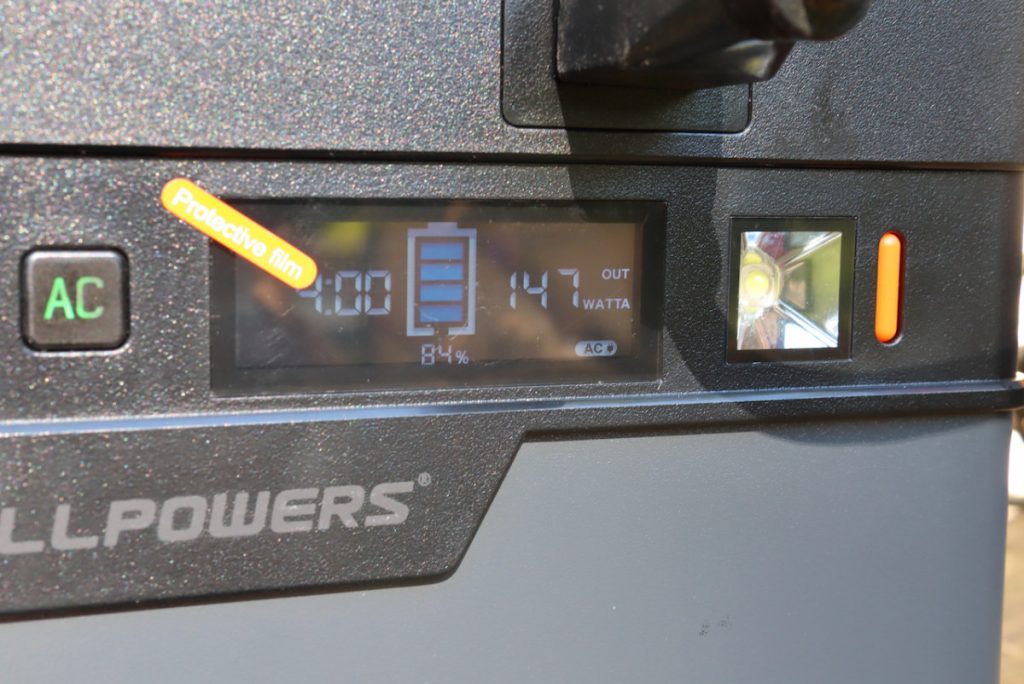
This small 1/3 HP band saw consumed only 147W (without load). Even if the inrush current had been seven times higher, the power station peak watts output of 1000W could have handled it.
After that, I enlisted it again, this time to help me while on the roof as I needed to do some pointing work on the chimney mortar and needed an oscillating tool. By now, I was totally convinced of its contribution to my work around the house and the shop.
Conclusion
Power stations can be very handy for woodworkers too. You can use them outside your shop and during outdoor/educational activities away from the grid. They can provide energy for lighting, charging cordless tool batteries, and running corded tools. While most of us buy them for the eventualities of power outages and camping activities, I am convinced that this technology can also benefit makers, handymen, and handywomen.
After publishing this story, I received a very informed email from an electrical engineer who shared some additional facts about Portable Power Stations and their compatibility with electric tools. Here is what Sven Oxtoby, BSc(Eng), wrote.
Some power stations/UPS/inverters will put out a fairly low-quality “simulated sine wave” AC waveform, which has many harmonics in addition to the basic 60 Hz. This “dirty” AC is fine for most modern IT equipment, but it tends to damage AC motors. The damage could be gradual, accumulating over time.
To run an AC power tool from such a unit without damaging the tool, the unit really needs to incorporate “pure sine wave” inverter circuitry (like the unit in this article). If the manufacturer does not advertise it as “pure sinewave,” then it is likely unsuitable for power tools even if it can supply enough power (high enough watts) for the starting inrush.
Disclaimer
I am not an electrician. My basic knowledge of electricity comes from a few classes I took in high school and many years of practical tinkering experience gained in the shops I worked in and the homes I lived in. If you are an electrician and think I need to correct some of the information that appeared here, please email me at: yoav.liberman@gmail.com.
Here are some supplies and tools we find essential in our everyday work around the shop. We may receive a commission from sales referred by our links; however, we have carefully selected these products for their usefulness and quality.








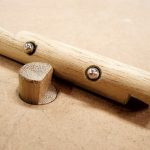
The battery pack looks interesting, but in terms of practicality, I think investing in a better sander would have improved the overall the sanding experience more than a nifty new power source. Unless you’re a bodger, woodworkers are rarely more than an extension cord away from a reliable power source.
Joe, I would have not bought the power pack just to power my sander. I bought it for emergencies and inadvertently found out that it is powerful enough to alleviate the hassle of laying out an extension cord. My discovery led me to try the power station on a small band saw – which surprisingly worked really well. If you are a teacher of woodworking (that’s my job) and are thinking of working or teaching away from a power source such as in the forest, in a shed, etc you will benefit from a station like this. More than this, sometimes one extension cord is not enough and you will need two or three connected together to supply electricity to a location that is far away from home. In our case, it is the chicken coop that is two extension cords away from home. So next time I need to fix something there and need a corded tool to help me out I would enlist the power station rather than the cords.